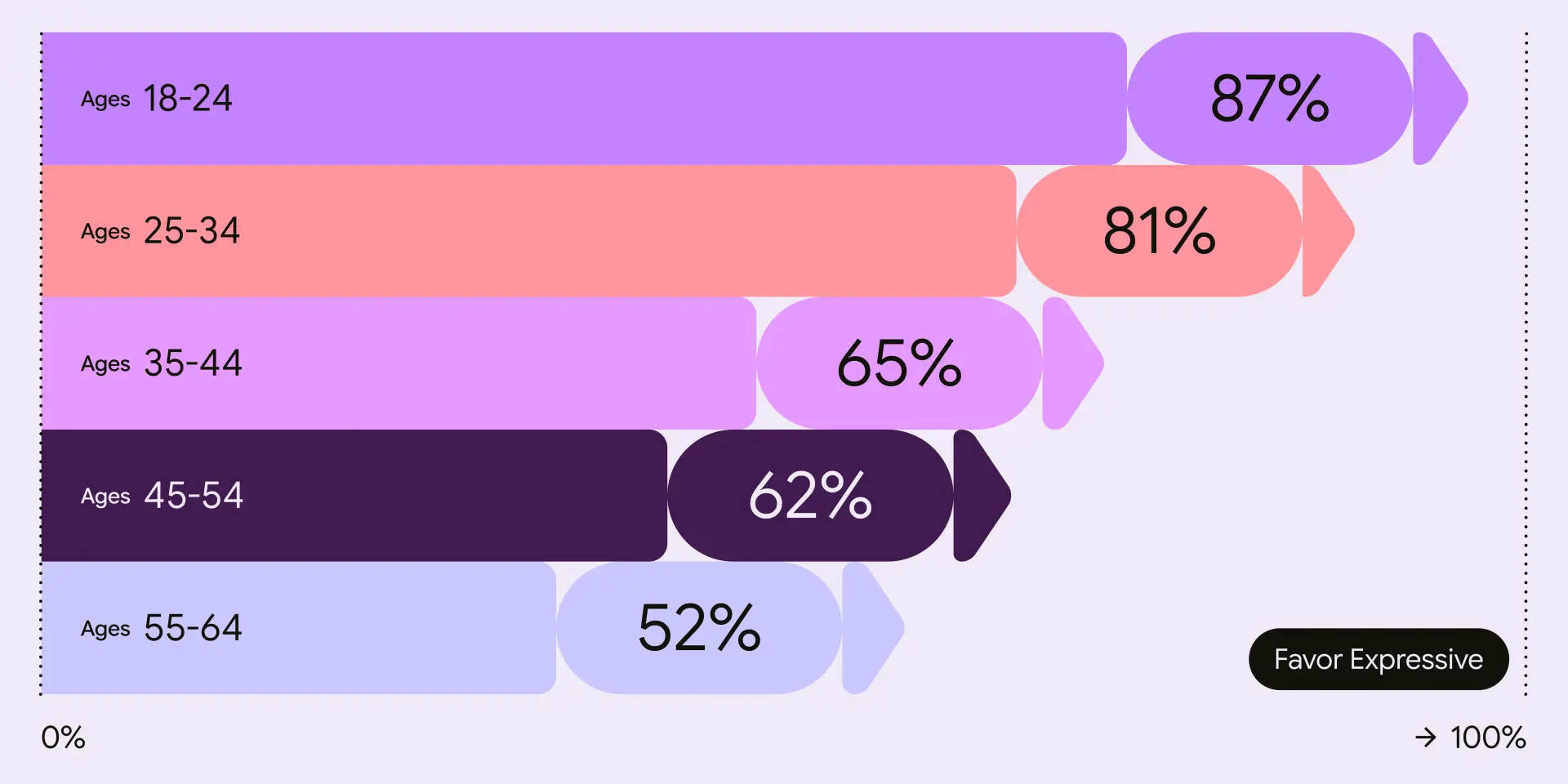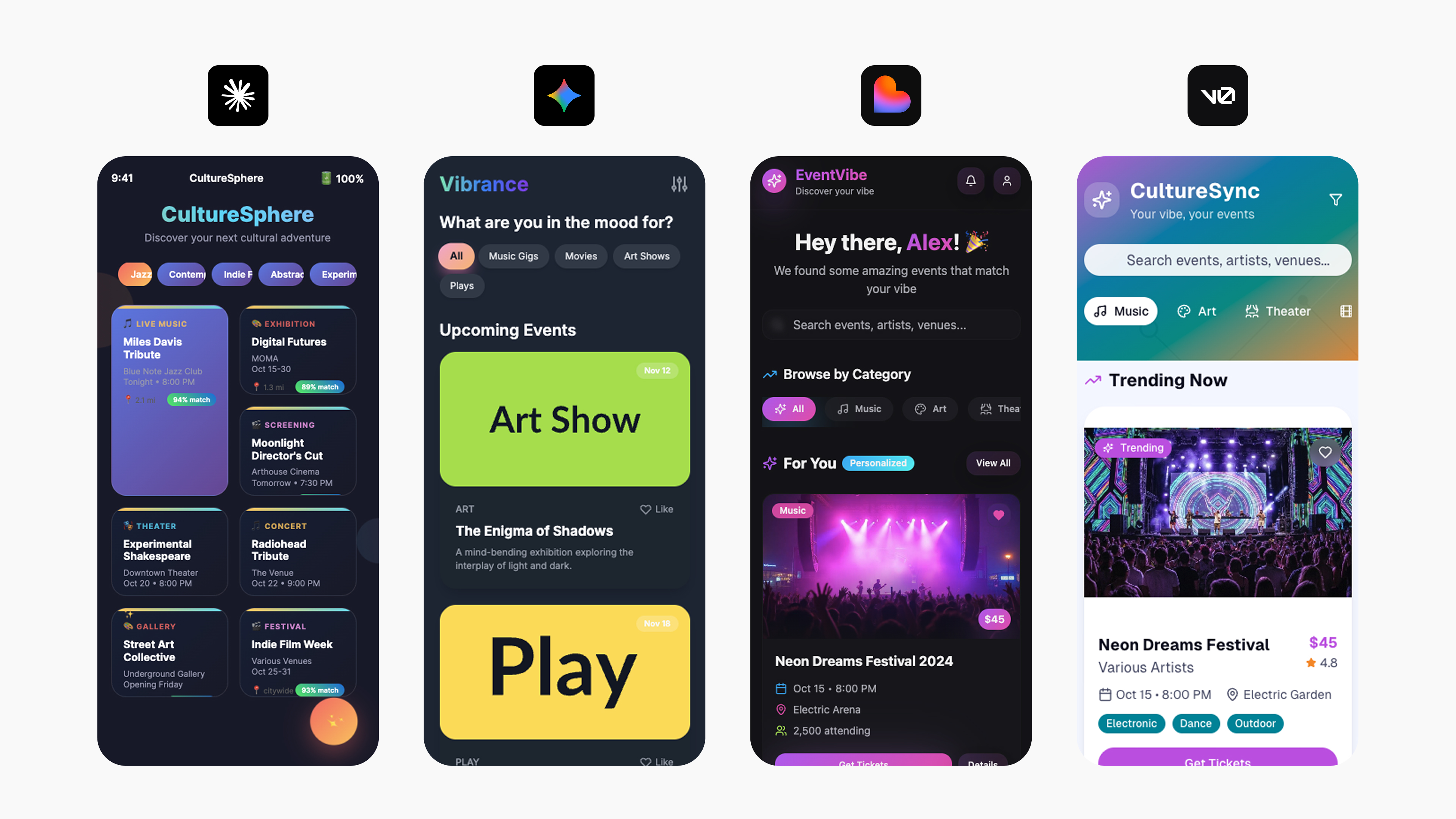The return of creative design
I was recently doing some interviews for a new design hire and noticed something interesting. Most of the candidates (if not all of them) showed little to no visual routes or creative examples within their portfolio. They did however, have pages and pages of research, user personas, double diamond frameworks, sitemaps, user journeys and wireframes.
But when it came to the visuals, it was the same colour schemes, fonts, graphic treatments and general layout that 99% of apps and digital products have. It made me stop and think about the state of design in 2025. It feels like we’ve hit this weird stagnant state where creativity is put to the back-burner with process taking its place as the priority. We’ve become obsessed with showing how we came to a certain outcome and what metrics drove the decision making.
Don’t get me wrong, I understand these things are important (business KPI’s and all that) and this approach isn’t necessarily wrong, but we focus so much on the process that we forget about appealing to genuine feeling and emotion. How does this design make the user feel? Is it fun? Do they enjoy it? Or does it just simply answer the problem and nothing more.
However recently, it’s been exciting to see more brands and companies starting to embrace fun and expressive visual language within their products again. Whether thats liquid glass with iOS, Material 3 with Android or Airbnb’s new icon library. Designers are starting to be more creative again and its working with audiences.
Apples iOS 26 update for liquid glass
The team behind Google’s Material 3 update wrote about their findings from their release, stating that users overwhelmingly preferred expressive designs and even in some specific cases, were able to complete their task up to 4x faster.

Audiences who favored expressive design in Material 3
This got me thinking about designing with AI. Unless you’ve been living under a rock you’ll be aware of the whole ‘AI will replace designers’ chat that circles LinkedIn. I wanted to see how AI might handle a prompt to create an app that stood out visually - whilst still having an intuitive UX. So I tested this with four of the main players in the AI game, Claude, Gemini, Loveable and V0.

The results were quite predictable. They all looked pretty similar, with the same fonts, colours and graphic treatments. Nothing that stopped and made me think ‘thats interesting’. This only solidified my view that AI is a great tool to aid in design and engineering, but just like any tool, is only as good as the person using it and is currently far from having the quality to make decisions based on taste.
So if this trend of creativity within apps and products continues - which I truly hope it does - it will be interesting to see what new and exciting designs emerge, what reception they’ll get and how AI fits into this space.
The return of creative design
I was recently doing some interviews for a new design hire and noticed something interesting. Most of the candidates (if not all of them) showed little to no visual routes or creative examples within their portfolio. They did however, have pages and pages of research, user personas, double diamond frameworks, sitemaps, user journeys and wireframes.
But when it came to the visuals, it was the same colour schemes, fonts, graphic treatments and general layout that 99% of apps and digital products have. It made me stop and think about the state of design in 2025. It feels like we’ve hit this weird stagnant state where creativity is put to the back-burner with process taking its place as the priority. We’ve become obsessed with showing how we came to a certain outcome and what metrics drove the decision making.
Don’t get me wrong, I understand these things are important (business KPI’s and all that) and this approach isn’t necessarily wrong, but we focus so much on the process that we forget about appealing to genuine feeling and emotion. How does this design make the user feel? Is it fun? Do they enjoy it? Or does it just simply answer the problem and nothing more.
However recently, it’s been exciting to see more brands and companies starting to embrace fun and expressive visual language within their products again. Whether thats liquid glass with iOS, Material 3 with Android or Airbnb’s new icon library. Designers are starting to be more creative again and its working with audiences.
Apples iOS 26 update for liquid glass
The team behind Google’s Material 3 update wrote about their findings from their release, stating that users overwhelmingly preferred expressive designs and even in some specific cases, were able to complete their task up to 4x faster.

Audiences who favored expressive design in Material 3
This got me thinking about designing with AI. Unless you’ve been living under a rock you’ll be aware of the whole ‘AI will replace designers’ chat that circles LinkedIn. I wanted to see how AI might handle a prompt to create an app that stood out visually - whilst still having an intuitive UX. So I tested this with four of the main players in the AI game, Claude, Gemini, Loveable and V0.

The results were quite predictable. They all looked pretty similar, with the same fonts, colours and graphic treatments. Nothing that stopped and made me think ‘thats interesting’. This only solidified my view that AI is a great tool to aid in design and engineering, but just like any tool, is only as good as the person using it and is currently far from having the quality to make decisions based on taste.
So if this trend of creativity within apps and products continues - which I truly hope it does - it will be interesting to see what new and exciting designs emerge, what reception they’ll get and how AI fits into this space.
The return of creative design
I was recently doing some interviews for a new design hire and noticed something interesting. Most of the candidates (if not all of them) showed little to no visual routes or creative examples within their portfolio. They did however, have pages and pages of research, user personas, double diamond frameworks, sitemaps, user journeys and wireframes.
But when it came to the visuals, it was the same colour schemes, fonts, graphic treatments and general layout that 99% of apps and digital products have. It made me stop and think about the state of design in 2025. It feels like we’ve hit this weird stagnant state where creativity is put to the back-burner with process taking its place as the priority. We’ve become obsessed with showing how we came to a certain outcome and what metrics drove the decision making.
Don’t get me wrong, I understand these things are important (business KPI’s and all that) and this approach isn’t necessarily wrong, but we focus so much on the process that we forget about appealing to genuine feeling and emotion. How does this design make the user feel? Is it fun? Do they enjoy it? Or does it just simply answer the problem and nothing more.
However recently, it’s been exciting to see more brands and companies starting to embrace fun and expressive visual language within their products again. Whether thats liquid glass with iOS, Material 3 with Android or Airbnb’s new icon library. Designers are starting to be more creative again and its working with audiences.
Apples iOS 26 update for liquid glass
The team behind Google’s Material 3 update wrote about their findings from their release, stating that users overwhelmingly preferred expressive designs and even in some specific cases, were able to complete their task up to 4x faster.

Audiences who favored expressive design in Material 3
This got me thinking about designing with AI. Unless you’ve been living under a rock you’ll be aware of the whole ‘AI will replace designers’ chat that circles LinkedIn. I wanted to see how AI might handle a prompt to create an app that stood out visually - whilst still having an intuitive UX. So I tested this with four of the main players in the AI game, Claude, Gemini, Loveable and V0.

The results were quite predictable. They all looked pretty similar, with the same fonts, colours and graphic treatments. Nothing that stopped and made me think ‘thats interesting’. This only solidified my view that AI is a great tool to aid in design and engineering, but just like any tool, is only as good as the person using it and is currently far from having the quality to make decisions based on taste.
So if this trend of creativity within apps and products continues - which I truly hope it does - it will be interesting to see what new and exciting designs emerge, what reception they’ll get and how AI fits into this space.